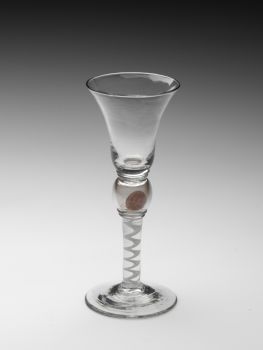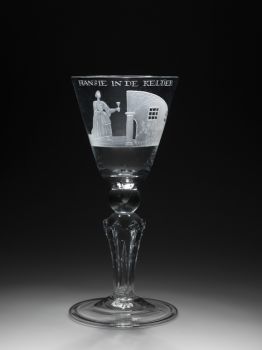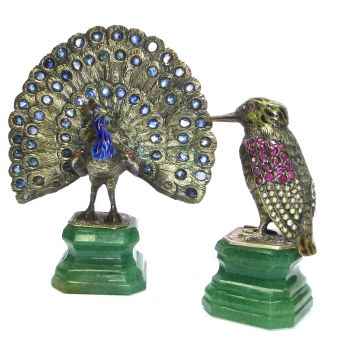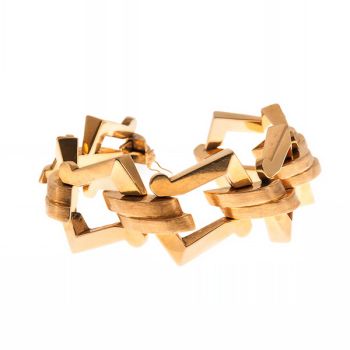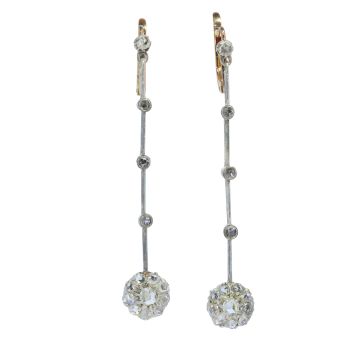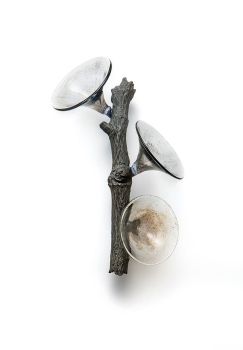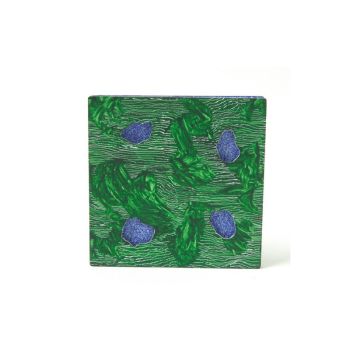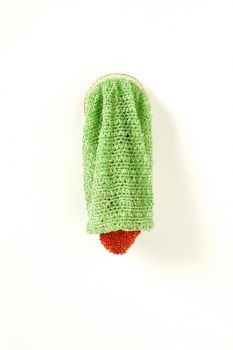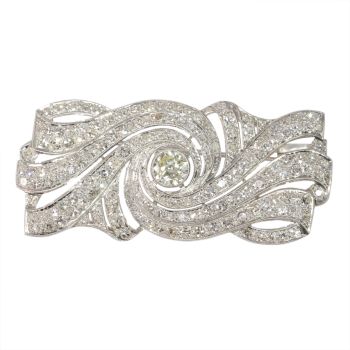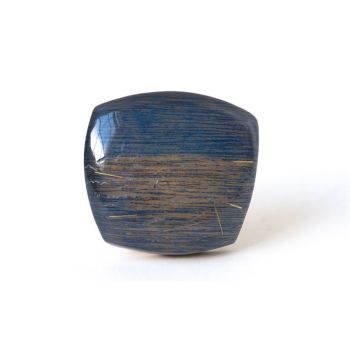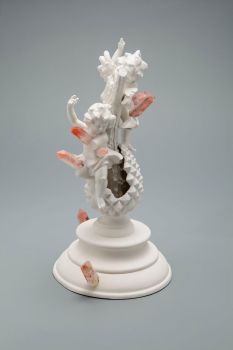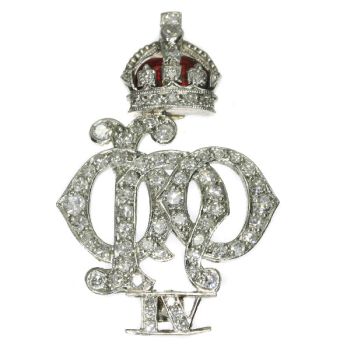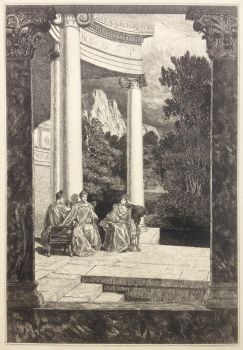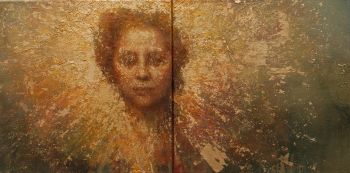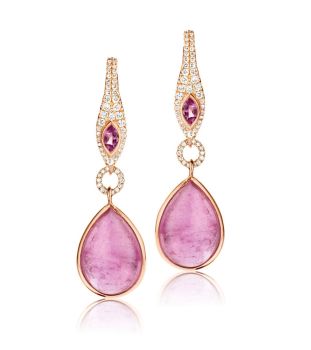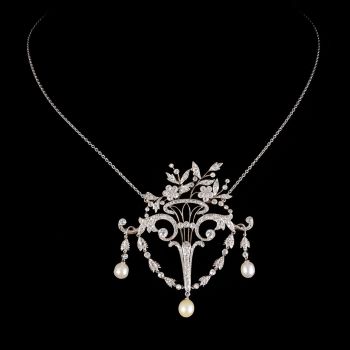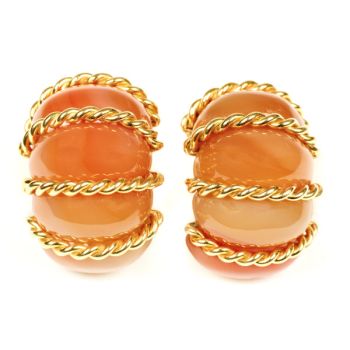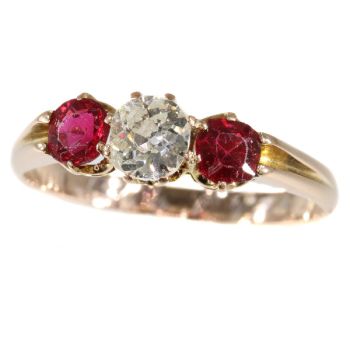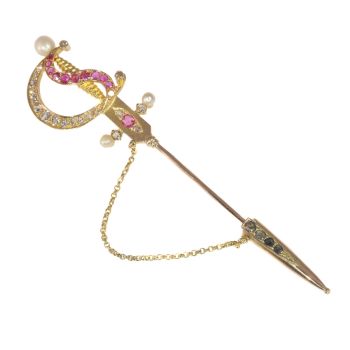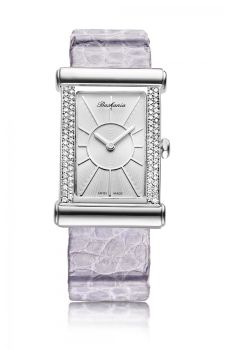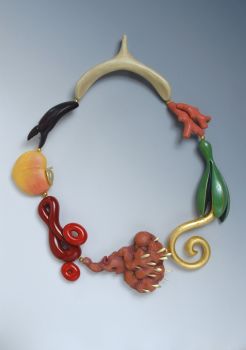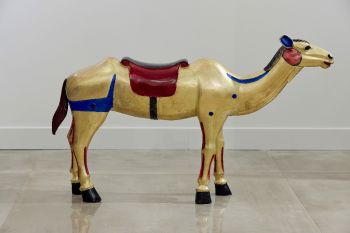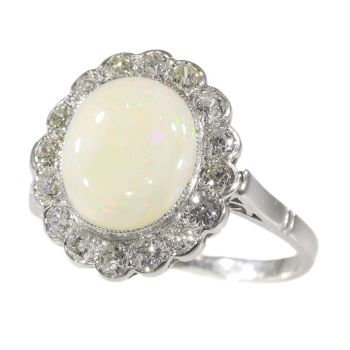Moeda romana de prata antiga montada em um broche vitoriano antigo 1870
Artista Desconhecido
Ouro
€ 2.750
Adin Fine Antique Jewellery
- Sobre arte
This brooch is a typical example of coin jewelry as made by Lucien Falize in circa 1890 (for examples see English translation of Vever on page 954 and further). The 18K gold mounting holds an ancient coin. As other jewelsby Falize it reveals an impeccable taste, despite the deliberate use of Classical sources and the beautiful works of the Renaissance in particular, which Falize knew and cherished above all others.
The coin itself has been recognized as an original ancient coin from 54 B.C.!
Antique jewelry object group: brooch
Condition: excellent condition
- (more info on our condition scale)
Country of origin:Although it does not carry any legible control marks we believe this to be of French origin.
Style: Victorian - Victorian decorative arts refers to the style of decorative arts during the Victorian era. The Victorian era is known for its eclectic revival and interpretation of historic styles and the introduction of cross-cultural influences from themiddle east and Asia in furniture, fittings, and Interior decoration. Victorian design is widely viewed as having indulged in a regrettable excess of ornament. The Arts and Crafts movement, the aesthetic movement, Anglo-Japanese style, and Art Nouveaustyle have their beginnings in the late Victorian era.
- See also: Victorianor more info on styles
Style specifics: The Grand Victorian Period - Experts divide the reign of Queen Victoria, also called The Victorian era (1837 - 1901) into three periods of about twenty years each; The Romantic Victorian Period (1837 - 1860), The Grand Victorian Period (1860 - 1880),and the Late or Aesthetic Victorian Period (1880 - 1901).
We consider this to be of the Grand Victorian Period.
This second Victorian period is famous for its ostentatious pieces set with pearls and diamonds (from South Africa). From ca. 1850 wealthy English had reported about jewelry from India and Japan, which heavily inspired the jewelers of this period. Thisperiod also corresponds with the death of Queen Victoria's husband King Albert making mourning jewelry (set with heavy dark stones) the type of jewelry specific for this period.
Period: ca. 1870
- (events and facts in 1870)
Description of coin: The coin represents the laurelled head of Santé (Salvtis). The back of the pendant showsSanté leaning on a pillar and holding in the right hand a snake (Nv. Acilivs III Vir. Valetv.).
Remarks on the coin master: The coin, a new monetary unit, with Manius as first name, proofs that he doesn't carryout his duty before approx. 700 (54 B.C.). In this era many historians were called Manius. One of them was Manius Acilius Glabrio. He was the son of a very important person, he battled under the command of Julius Cesar during the Civil war, hebecame many times governor.
Material: 18k yellow gold and silver.
- (more info on precious metals)
Hallmarks: No trace.
- (more info on hallmarks)
Dimensions: 4.70 cm (1.85 inch) by 2.70 cm (1.06 inch)
Weight: 12.00 gram (7.72 dwt)
Reference Nº: 01198-2660
Copyright photography: Adin, fine antique jewelry
- Sobre artista
Pode acontecer que um artista ou criador seja desconhecido.
Algumas obras não devem ser determinadas por quem são feitas ou são feitas por (um grupo de) artesãos. Exemplos são estátuas dos tempos antigos, móveis, espelhos ou assinaturas que não são claras ou legíveis, mas também algumas obras não são assinadas.
Além disso, você pode encontrar a seguinte descrição:
•"Atribuído a …." Na opinião deles, provavelmente uma obra do artista, pelo menos em parte
• “Estúdio de…” ou “Oficina de” Em sua opinião um trabalho executado no estúdio ou oficina do artista, possivelmente sob sua supervisão
• "Círculo de ..." Na opinião deles, uma obra da época do artista mostrando sua influência, intimamente associada ao artista, mas não necessariamente seu aluno
•“Estilo de…” ou “Seguidor de…” Na opinião deles, um trabalho executado no estilo do artista, mas não necessariamente por um aluno; pode ser contemporâneo ou quase contemporâneo
• "Maneira de ..." Na opinião deles, uma obra no estilo do artista, mas de data posterior
•"Depois …." Na opinião deles uma cópia (de qualquer data) de uma obra do artista
• “Assinado…”, “Datado…” ou “Inscrito” Na opinião deles, a obra foi assinada/datada/inscrita pelo artista. A adição de um ponto de interrogação indica um elemento de dúvida
• "Com assinatura ….”, “Com data ….”, “Com inscrição ….” ou “Tem assinatura/data/inscrição” na opinião deles a assinatura/data/inscrição foi adicionada por outra pessoa que não o artista
Você está interessado em comprar esta obra de arte?
Artwork details
Related artworks
Artista Desconhecido
Art nouveau en art déco objecten1900 - 1930
Preço em pedidoBob J. Shimanovich Kunsthandel
1 - 4 / 12- 1 - 4 / 24
- 1 - 4 / 24
Artista Desconhecido
Pulseira de diamante do século 18 com entalhes de 2.000 anos1790
€ 23.000Adin Fine Antique Jewellery
 Com curadoria de
Com curadoria deDanny Bree
1 - 4 / 20Fontana
Broche de cesta de flores com pingente1900 - 1905
Preço em pedidoAns Hemke-Kuilboer Juwelier & Antiquair
1 - 4 / 24- 1 - 4 / 12











